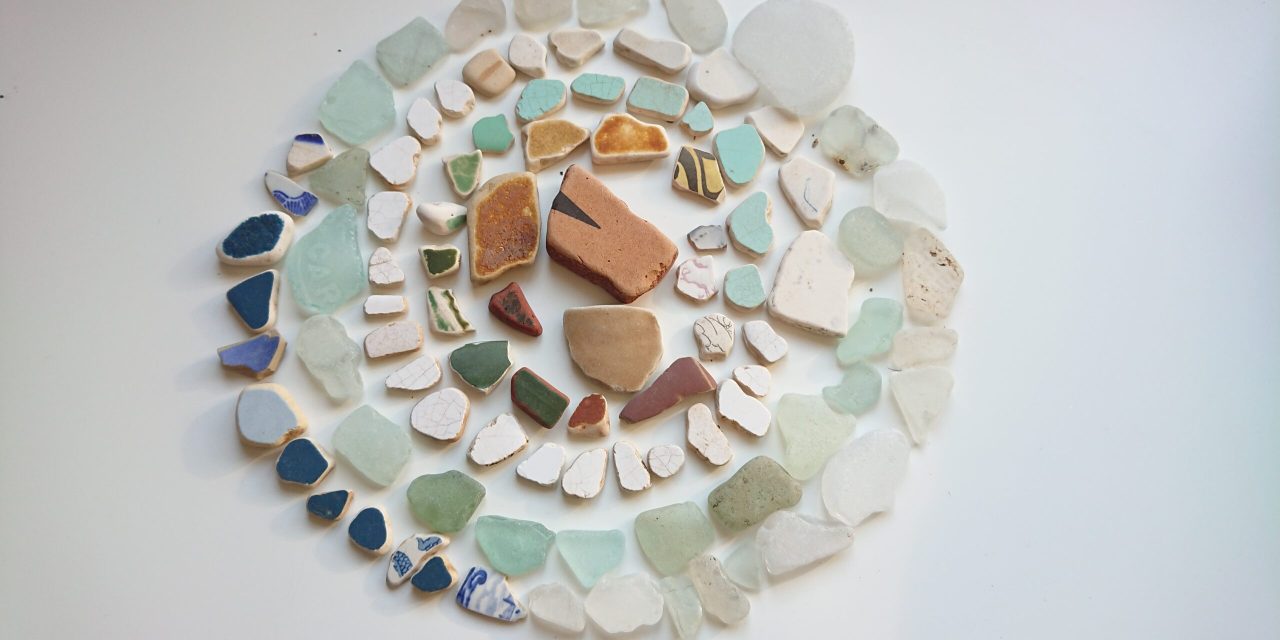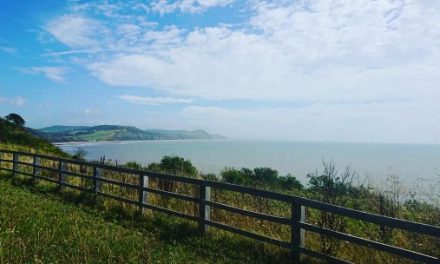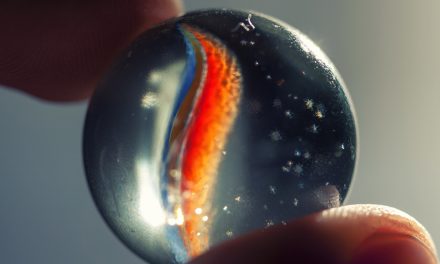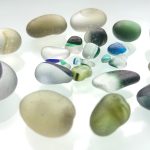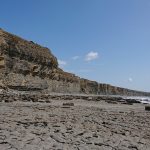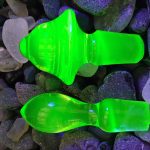Beachcombing is becoming even more popular as time progresses. People love to walk across beaches for hours on end, collecting all the treasures that lie there waiting to be noticed. A popular treasure that most beachcombers will search endlessly for is sea glass.
Sea glass comes in beautiful colours and different shapes and sizes, but what exactly is sea glass? Keep reading to find out what sea glass is, where it comes from, and how it is made.
What to expect from our article
- 1 What is sea glass?
- 2 How is sea glass made?
- 3 Sea glass vs. beach glass
- 4 Where can you find sea glass?
- 5 Types of sea glass
- 6 Artificial sea glass
- 7 Uses of sea glass
- 8 What is the rarest type of sea glass?
- 9 Orange sea glass
- 10 Red sea glass
- 11 Black sea glass
- 12 Teal sea glass
- 13 Pink sea glass
- 14 Cobalt blue sea glass
- 15 Milk glass
- 16 Purple sea glass
What is sea glass?
Sea glass is a fantastic combination of both natural and manmade resources. This glass started in glass factories, homes, and other places, and then the sea turned it into something beautiful that we can collect on beaches today.
Sea glass refers to small pieces of glass that are often found at beaches, bays, and near other flowing water. It typically has rounded edges, though not always, and is almost cloudy in colour. This glass can be found in various interesting colours, but the most commonly found colours are white, green, and brown.
Sea glass can be found all over the world and is typically found near the sea as it gets washed up by the waves. Genuine sea glass is becoming increasingly difficult to find as time goes on. This is simply because glass is not used as commonly as it has been in the past.
Natural disasters and shipwrecks are also starting places for glass that ended up in the sea.
How is sea glass made?
Years ago, before environmentalism was really considered, companies and people would throw their glass waste into the sea, over the edges of cliffs. When discarded into the sea, the glass would shatter and break. This is the start of the sea glass-making process. Over time, these shards of glass would get tumbled in the sea by waves and would eventually wear down in the saltwater due to friction against other materials in the ocean.
This glass starts to become softer around the edges and more rounded, just like the pebbles that get washed up onto the beach. It can take anywhere from 7 to 10 years of constant tumbling for a standard shard of glass to become sea glass, and sometimes even longer than that. A quality piece of sea glass will have no shiny spots and is well-frosted with smooth edges.
Sea glass vs. beach glass
Beach glass can be found on either saltwater or freshwater beaches, whereas sea glass can only be found on saltwater beaches. These two terms were created to help distinguish between the two different types of glass.
The differences between the two are very slight, and it is often hard to tell the difference. Saltwater beaches are a lot more common and provide the tumbling action that sea glass needs to be formed. Beach glass can also be found at lakes too, though more commonly in America.
Beach glass is typically less weathered and can still have some shiny spots in it, meaning the sea hasn’t entirely tumbled it. All sea glass is beach glass, but not all beach glass is sea glass.
Both types are equally as valuable and stunning.
Where can you find sea glass?
You can find sea glass by walking along specific beaches and looking among the sand and pebbles. Some beaches are more likely to have sea glass than others. The more current and wave action, the more likely you are to find sea glass.
Water with a higher PH level and more rocks means that the glass will age faster. Since each beach is different, you need to do research ahead of time to avoid being disappointed. Usually, the best time to go is after a storm or a strong on-shore wind. Each time you visit the beach, there will be more treasures to find because the waves constantly wash up new material.
Some beaches are known to have larger amounts of sea glass on them, making them easier to find.
Types of sea glass
Essentially, anything made out of glass in the past could have been the source of the sea glass we find today. It comes in many different shapes and sizes. Here are some types of sea glass that you may find:
- Rounds – The bottoms of glass bottles.
- Patterned or embossed glass – These can sometimes show you where the glass originated from. Certain words, patterns, or brand names can be easily identified with the correct knowledge or a quick Google search.
- Bonfire glass – Glass that has been melted in a fire and then smoothed out by the sea.
- Bubbles – Perfectly round pieces.
- Boulders – Huge lumps of sea glass.
- Stoppers -Bottle tops.
- Marbles – Used as children’s toys before modern technology.
- Bottles – Some bottles can be found still intact.
Artificial sea glass
The exact process for making sea glass can also be used to manufacture artificial sea glass. You can tumble glass using a rock tumbler. Inside the tumbler, the pieces of glass will constantly knock against each other and will eventually become smooth and rounded pieces of glass that look just like sea glass. You can make this type of glass in almost any colour, which is a good alternative if you can’t find a specific colour but need it for business purposes.
Uses of sea glass
Some people just like to collect sea glass as a hobby. Their growing collections can be used for display purposes or can be stored away. However, some people are exceptionally creative and use sea glass for business purposes. There are many uses for sea glass. You can make jewellery, art, keyrings, cards, pictures, and more. What you can do with this glass depends on how creative you are.
Some things, like jewellery making, require a lot more patience, time, and skills than other crafts.
What is the rarest type of sea glass?
One of the best things about seaglass is that it comes in such a wide range of beautiful colours. Unfortunately, some colours are easier to find than others and may require extensive searching. The reason behind this is that some coloured bottles were produced more than others. There were a lot of white, green, and brown bottles made for different uses, so these are the most common ones to find. Rarer colours include:
- Red
- Orange
- Yellow
- Blue
- Pink
- Purple
They can be found, but it is much harder to locate these unique pieces of sea glass.
Orange sea glass
There was no popular demand for orange bottles, which explains why it is so rare to find orange sea glass. Most seaglass of this colour is more likely to be from decorative art pieces such as glass vases and tableware. There is a type of orange sea glass called Amberina, which was popular in the 1930s when it was used to make decorative glass objects.
Red sea glass
Another rare colour of seaglass is red, and it is very sought-after. Red was a popular colour for tableware, some bottles, and also red warning lights.
Black sea glass
Black seaglass isn’t actually black. When it is held up to a light, it is a dark olive-green colour. Black glass dates back to the 1700s and was commonly used for beer and liquor bottles until around 1870.
Teal sea glass
Teal seaglass is another rare find and is mainly derived from bottles and jars used for ink, mineral water, and wine. Most sea glass of this colour is from old bottles that were made between the 1870s and the 1910s. These bottles and teal coloured seaglass are very collectable due to their vintage status.
Pink sea glass
The pink glass was used for Depression-era tableware. Most of the pink sea glass that we find today is coloured pink by the sun. Clear glass bottles were made with selenium as a decolourant. A chemical reaction between the selenium and the sun causes the clear glass to turn a light pink colour.
Cobalt blue sea glass
This colour of sea glass originates from bottles and jars that were used for different medicines in the 1880s and ‘pseudo’ medicines in the 1950s, such as Noxzema, Vic vapour rub, and Pepto Bismol. This blue glass was made by adding cobalt oxide to the glass.
Milk glass
Milk glass is completely opaque and is white in colour. It was invented by the Venetians in the 1500s but continued to be used more recently in the 50s and 60s for face and hand creams. Unlike normal sea glass, milk glass does not appear frosty in appearance.
Purple sea glass
Similarly to pink sea glass, the purple coloured glass is often sun-coloured. Most purple sea glass comes from clear glass bottles that were made between 1880 and 1915 that used manganese as an additive, which reacts with the sun and creates a light purple colour. Manganese was purchased from Germany and was no longer available after World War I. This resulted in these jars and bottles no longer being produced.

